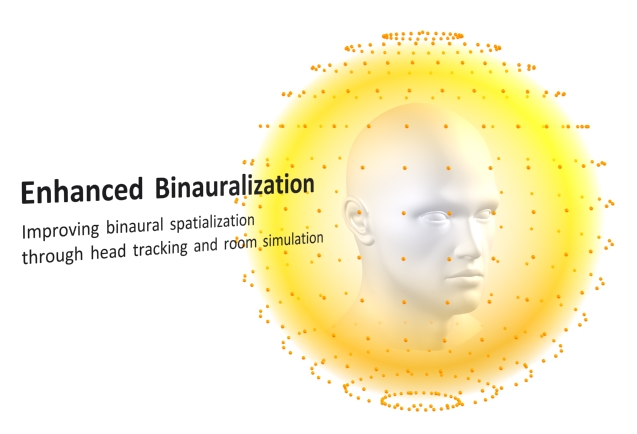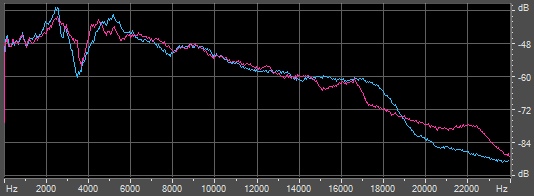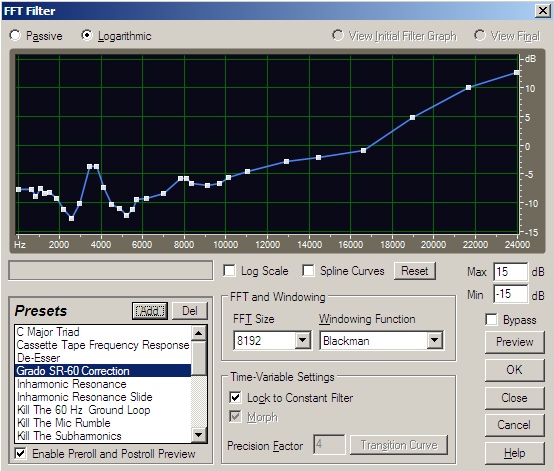

It is possible in theory to reproduce the soundfield created by the speakers in a room over headphones. One way to do this is to use open-air headphones to pick up the sound reaching the ears as if they were a pair of head-mounted microphones. I plugged my headphones (Grado SR-60 open air design) into the microphone jack, put them on as if I was listening (except I flipped the earcups so that the transducers were facing out), and recorded as I played music out of my speakers. I cleaned up the audio and switched my headphones from the microphone jack to the headphone jack and played it back. The result was at least as convincing as binaural room impulse response convolution with the University of Oldenburg BRIR database. Listen to the audio samples below over headphones.
Headphones are not designed to work as microphones. Naturally, the audio captured by the Grado SR-60 headphones had a colored frequency response. In order to measure this, I recorded a full bandwidth white noise signal over several seconds and analyzed the frequency response of the result. There was a distinct coloration of the sound, with a high frequency rolloff and a notch at about 3800 hz. In order to correct this coloration in the recorded audio samples, I applied an FFT equalization filter with the inverse of the frequency response curve.

